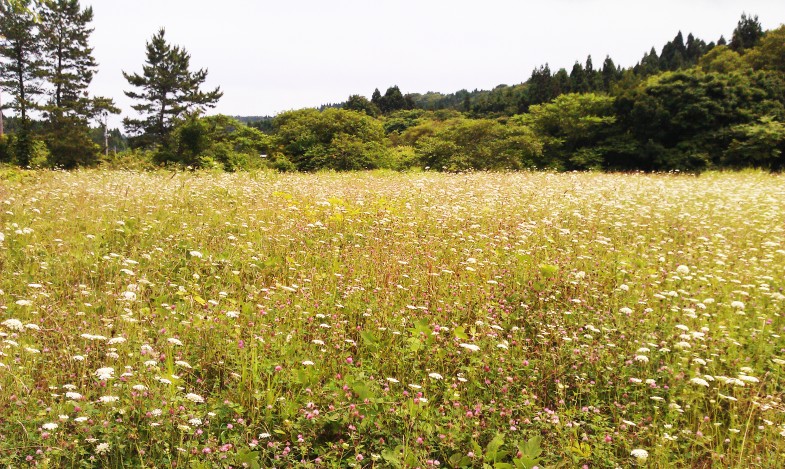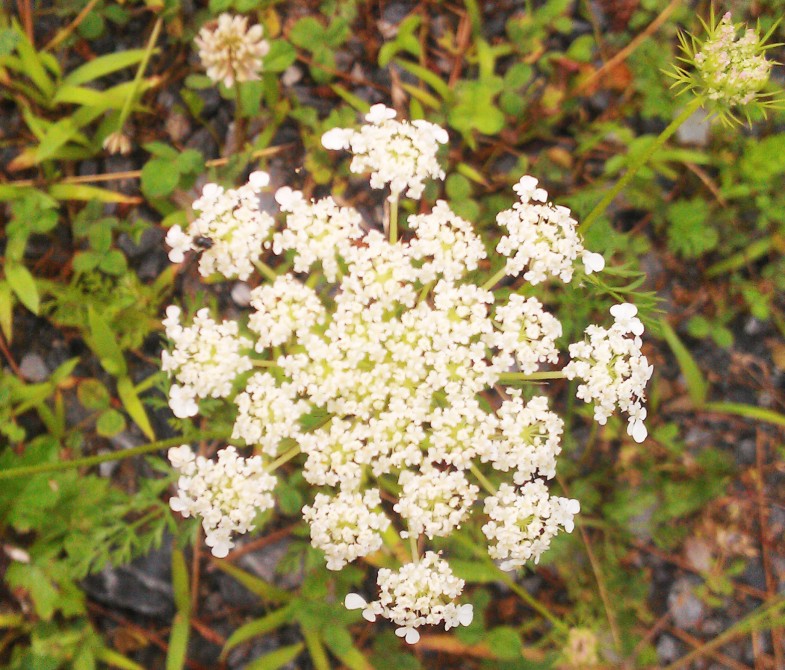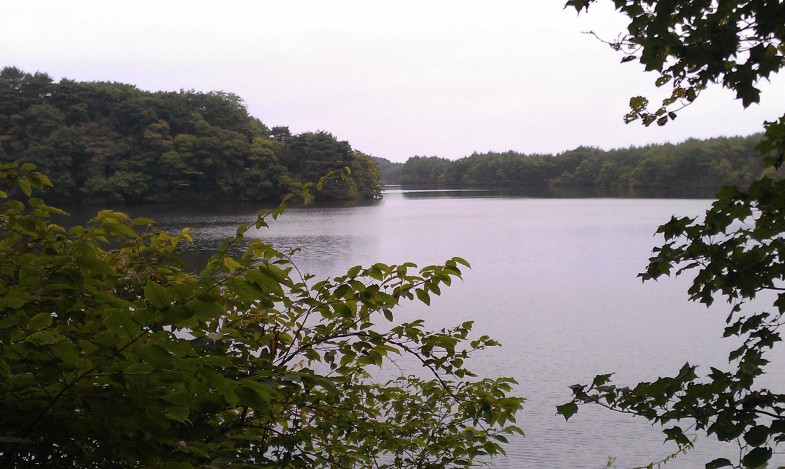
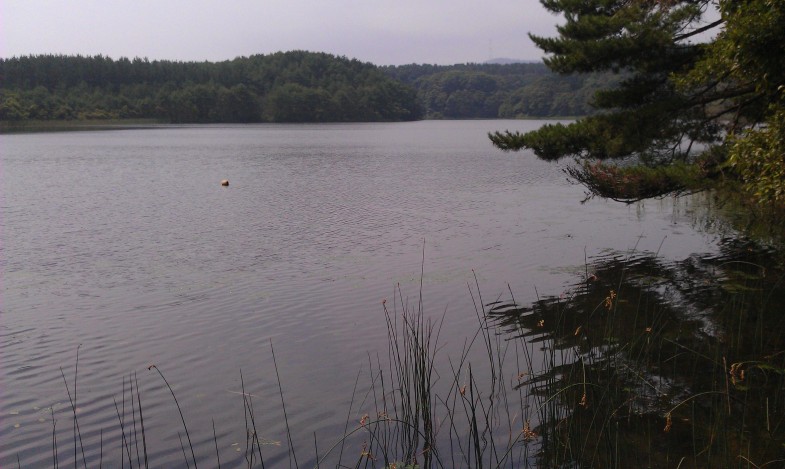
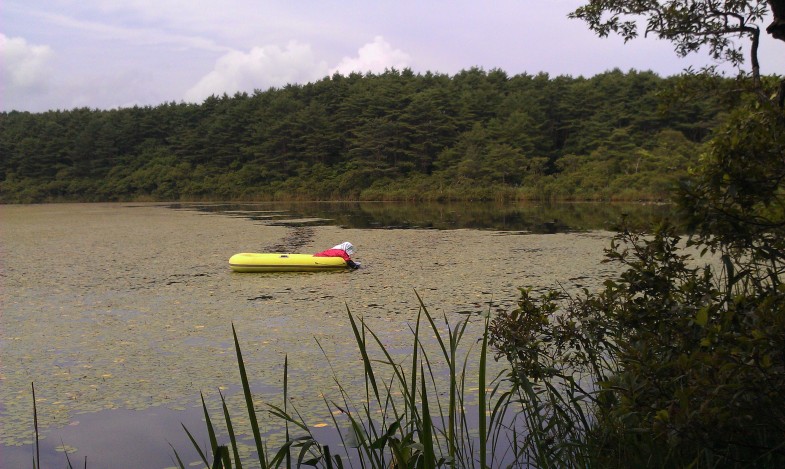
Sandhólavatn er sandströnd sem myndar bylgjur vegna vinds.、Þetta eru ferskvatnsmýrar sem myndast náttúrulega þegar ár renna í lægðir (Sagata, Niigata-hérað o.s.frv.)。Neðansjávarsandur bólgnar upp eins og fylling vegna hafstrauma og öldu, sem hindrar útganginn.、(Það er myndað öðruvísi en brakvatnsvötn eins og Saroma-vatn og Hachirogata)。Sandölduvatnið sjálft er dýrmæt heild sem er að glatast um allan heim.、Að skapa líffræðilega verðmætt umhverfi。
Sand dune lake is a natural freshwater pond in a sandhill. It was shaped by wind. The wind had been carring sand and formed ups and downs, and then water stream into hollow places. It is not only very valuable existence itself in the world but also it gives important environment for biodeversity that’s being lost.
Í Higashidori þorpinu、Það eru mörg stór og lítil „sandölduvötn“ (13 nefndir mýrar einar)。Higashidori Village, Sarugamori Sand Dunes og Back Votlendi hafa verið valin sem eitt af 500 mikilvægum votlendi Japans (reyndar má segja að mestur hluti Shimokita skagans hafi verið valinn á þennan hátt).。Þessi apa ga skógarsandöld (breidd 1-2 km)、„Shimokita Sand Dunes“ er sambland af sandhólum (heildarlengd 17 km) og sandhólum sem ganga aðeins inn í landið.、Þó að það sé lítið þekkt, er það í raun stærsta sandöld í Japan.。Ástæðan fyrir því að það er ekki vitað er、Vind- og sandverndarskógar umlykja sandhólana.、Hlutir sem erfitt er fyrir fólk að sjá、Stærstur hluti þess er notaður af varnarmálaráðuneytinu og öðrum fyrir ballistic prófunarstaði o.fl.、Þetta er vegna þess að aðgangur er bannaður.。
There are many dune lakes in Higashi-dori village. Named lakes are minimum 13s. Salugamori sandhill (1~2 km width, 17 km length) include the rear wetland in this village has selected one of 500 of the important wetland of Japan (Actually most of Shimokita peninsula is selected also). Additionaly, Shimokita sandhill (includ this Salugamori sandhill with the next ones) is really the biggest one in Japan. However almost all japanese don’t know of it. One of the reason is that this place is hidden from the roads by pine grove for protect the wind and the sand. The other one, here is off limited, because this ares has been useing for test site of trajectory of Ministry of Defence (MD).
Sandölduvatnið sjálft er utan varnarmálaráðuneytisins.、Sumir þeirra virðast einnig vera notaðir til fiskveiða.。Furuskógar sem notaðir eru til vind- og sandvarna hafa þó einnig stækkað.、Margir af vegunum sem liggja að mýrinni eru að hverfa.。Fólksfækkun og öldrun heldur einnig áfram hér.、Engar fræðilegar rannsóknir eru nú gerðar.。
These are out of the area of MD. A few lakes of it look as useing fishery sometimes but not often. Most of the roads to go there is being lost by growing thickly weeds and pine grove. Creasing depopulation and ageing there. Academic reserch stopped now.
Myndir eru frá toppi til botns (raðað frá norðri til suðurs)、Onuma、Sakyo Marsh、Aranuma。Stærð og dýpt eru örlítið breytileg, en þau eru öll í náttúrulegu ástandi.。Onuma er stór rækja、Sakyo-numa er frægur fyrir Aegagropila Linnaei.、Hvað gerist núna þegar engar rannsóknir hafa verið gerðar?。Aranuma er 1-2m djúpt.、Brasenia schreberi er í uppskeru.。
Photo:(above) O-numa. Small river prawn lives in. (midlle) Sakyo-numa. Sakyo-numa is famous for “Hime-malimo” (small moss ball), but how is it now? (bottom) An old woman was picking “Jun-sai” (the water shield) from the water at lake Ala-numa. ※numa means lake or pond. All of dune lakes are Nature.
